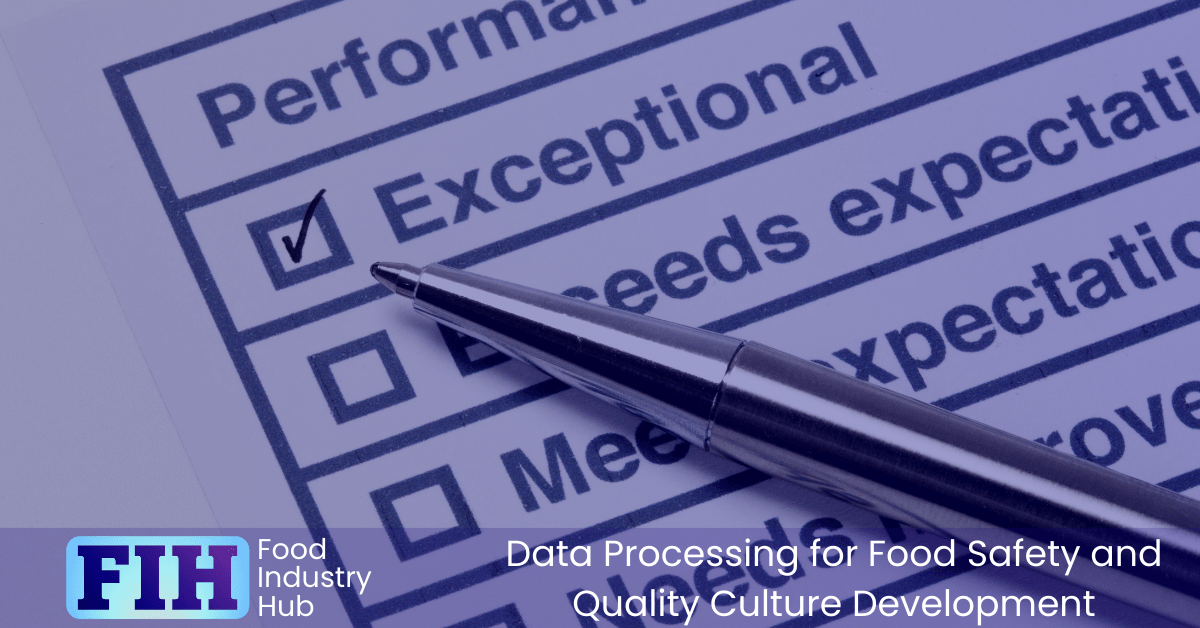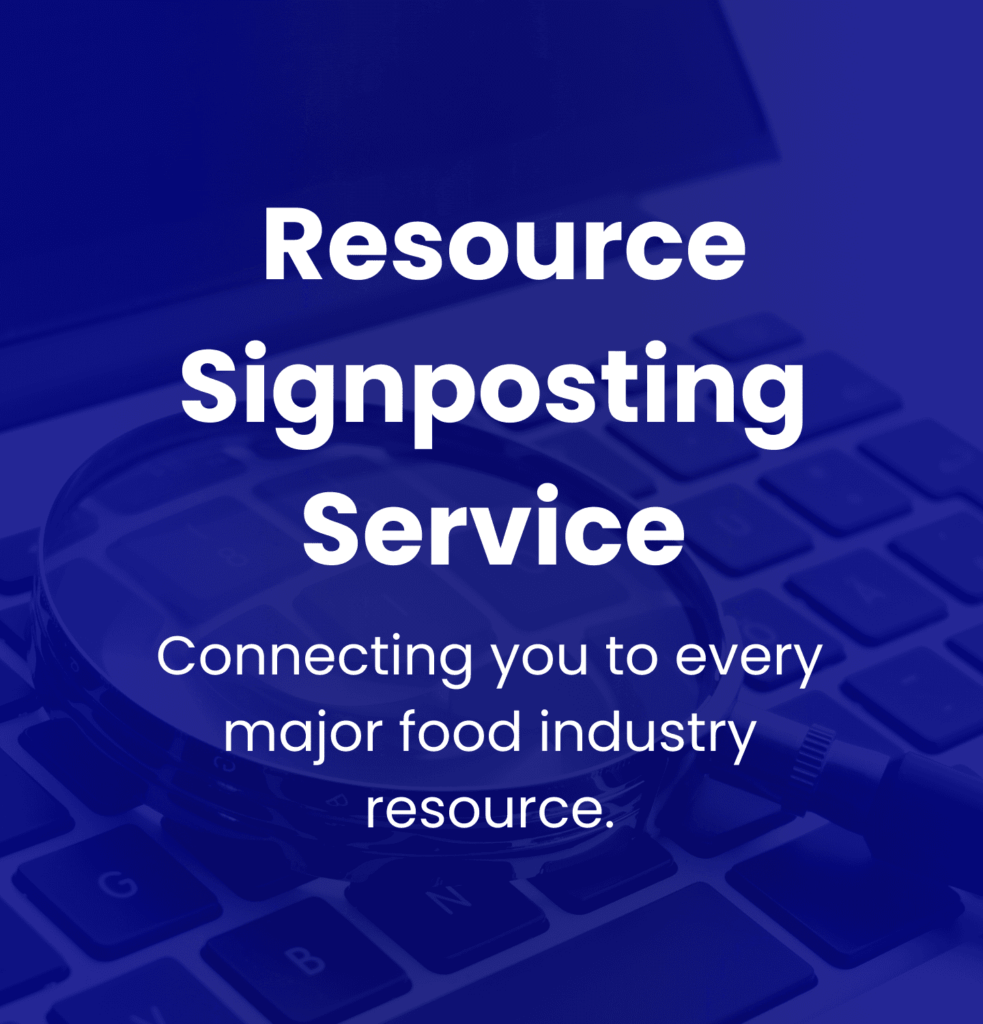Introduction
There’s a lot about culture that seems very subjective and removed from objective data, but data interactions can be among the most powerful tools organisations have when making strategic interventions to their food safety and quality culture. This post explores data-handling by organisations, looking at collecting, assessing, and reacting to data; and some of the effects that this can have of food safety and quality culture development.
Table of Contents
Data and Values Alignment
If you believe the management can influence and improve the quality culture, the first line of enquiry should be ‘what is it about the management approach that’s resulted in the existing culture?’
If there’s a perception that getting product out of the door is the most important priority to your business, how was that perception established? What sort of instructions and feedback have been given to your production team?
If a production shift fails to hit output targets because defective product was placed on hold, does the site management congratulate the production team for diligently holding back the bad product, or punish them for falling below target? What priorities are being reinforced?
“Oh yeah, well of course they’ve got to say quality is the top priority… But just watch how the Production Manager reacts if we don’t hit targets.”
It’s really important that the way management responds to data such as a failure to meet production targets is properly aligned with the values of the company – any apparent contradiction to your stated quality values undermines credibility.
Attempting to introduce quality values while conflicting priorities are being worked to will seem confusing at best, and disingenuous at worst. It’s just as important to try to remove influences that detract from quality values as it is to introduce quality priorities.
If you want to systematically promote quality culture, just make it clear that that’s your real priority. Be as interested in quality performance as production output. Be passionate about it and let everyone around you know that your idea of them doing their jobs well is for them to prioritise quality and food safety.

KPIs (and Unintended Consequences)
Could quality KPIs damage your business and quality culture?
A common tactic for management initiatives is to tie the production shift bonus to product quality. Produce good quality product and you get a bonus. Produce non-conforming product that has to go on hold, and you don’t get the quality bonus.
Makes sense – Incentivise the team to produce good quality product and reward them when they do.
Let’s say I’m standing at the end of a big tunnel freezer and I’m carrying out QC checks on the product just before its metal-detected and packed. I’m on the night shift. The unit size is measuring too small and, really, it should go on hold. Maybe the production process was started by people on the afternoon shift, maybe it’s someone on my shift… Either way, I had no hand in making the stuff but I’m going lose my shift bonus if I report what I’m seeing. Everyone else on the shift will also lose their bonus, so I’m probably not making any friends if I put the product on hold.
It’s easy to see how performance-based financial incentives can backfire. In the above scenario, the financial incentive to produce good quality product is really a disincentive against putting bad product on hold.
Try to encourage systematic behaviours and approaches that you predict will promote the sort of outcomes you want, so that ‘doing the right thing’ is always rewarded no-matter the particular outcome. There are all sorts of ways offering a monetary reward can backfire, but it might not hurt to let people know you’ll be taking their attitude toward quality into account next time there’s a promotion available.

KPIs (and Performance Evaluation)
What do the shift KPIs look like at your company?
Production output? Waste? Downtime? Overall equipment efficiency?
The things you measure, and the way you assess performance – these things tell everyone what you’re interested in, and what good performance means to you.
There are all sorts of performance metrics that can be addressed as agenda items in the same way as output focussed operational KPIs. For example…
• How many times (if any) did the metal detector fail to detect a test piece on this shift?
• How many times (if any) did the metal detector reject contaminated product on this shift?
• How many corrective or preventative actions from internal audits were carried out on this shift?
• How many people voluntarily attended the taste panel on this shift?
• Have there been any variations to product quality characteristics throughout the production run?
• Have there been any observations of pest activity or equipment/fabrication faults?
Now, you might think these are the sort of things that should only be reported by exception. Assume the metal detector has been working reliably unless someone proactively reports to you that it hasn’t been.
Putting aside the issue of whether that’s a valid assumption to hold, the act of asking the question and expecting an answer is what’s really communicating your values here.
Building quality KPIs into your reporting structure can actually bring into effect long-term cultural advantages in addition to values reinforcement. Organisationally, production and efficiency figures typically get reported to senior management and directors. This necessitates a cascading effect because the source of that performance data is generally 3-4 hierarchical tiers removed from that level of senior management – so reporting systems evolve within the organisation so that the senior management can receive data from middle management, who can receive data from supervisors, who collate data accumulated by factory floor workers. The organisation builds itself around the information demanded by the top management tier.
The nature of the information disseminated throughout an organisation has a profound impact on cultural values. In many factories, any shop floor supervisor could tell you what their output had been over the last 2 weeks, and how their shift ranked alongside the other shifts for volume. They might not have any idea what caused the most recent customer complaint.
Consistently asking questions and recording quality performance metrics isn’t just about going through the motions of positively recording zero incidents, it’s about conditioning every organisational tier throughout the company to pay attention to those metrics.

Sign-up for the Food Industry Hub Mail Service
We regularly produce new content for food industry professionals, and the Food Industry Hub Mail Service is the best way to stay up to date with the latest additions.
Signup today to be added to the Food Industry Hub mailing list.
Only Judge People by KPIs Within Their Direct Control
If a food factory has a KPI of <2 customer complaints per month, and the company receives 3 complaints then the quality system failed to meet its KPI – which is a completely different kind of a statement to ‘the Quality Manager failed their KPI’. It’s important to distinguish between the failure of a business function and the failure of an individual.
Systems KPIs are good and valuable things, so this isn’t an argument against using the number of incoming complaints as an indicator of the performance of your quality system – just a prompt to consider the personal way that people can interpret a systems failure that applies to an area they are responsible for.
Suppose another KPI is: ‘At least 50% of escalations must be pro-active rather than reactive.’ All things being equal, you might receive a complaint, so you’re up 1 reactive escalation and failing your KPI…. What can you do about it? Go identify and rectify a weakness in your QMS. Now, you’re meeting your KPI at 50% of escalations being proactive because the KPI was devised to promote proactive reporting rather than directly discourage reactively raised incidents like complaints.
You could have an operational KPI that says, “If any evidence of pest activity is seen, the pest control company must be notified within 20 minutes”.
See any pests on the shift? No – fine, KPI achieved (default).
See any pests on the shift? Yes, and pest control informed 17 minutes from the sighting – fine, KPI achieved.
See any pests on the shift? Yes, but didn’t do anything about it for 5 hours – KPI failed.
With this kind of approach, individuals are more directly empowered to take action to determine whether they achieve their KPIs, and behavioural changes can be engineered to encourage a quality stance that the company would like to promote.

Feedback and External Performance Metrics
Performance metrics have obvious, indisputable value in business. Every insight you can get helps steer decision-making and shapes strategy. It’s never good to go in blind.
If you worked in the marketing department, it would make perfect sense to pay for a focus group to provide you with criticisms and insights from the point of view of the people you’re trying to sell to. That’s valuable information.
The same principal holds true for audit non-conformities, customer complaints and incident reporting – it’s all constructive, valuable information that you can use to guide decisions as to where to invest in your internal systems for better quality performance.
If you want to develop your food safety and quality culture, treat every incident as a new piece of valuable information. It’s not ‘bad news’ – it’s insights into quality and operational performance. A non-conformity isn’t some kind of accusation, more like guidance for where to focus your continuous-improvement efforts.
Customer complaints are a particular point of consternation for quality management:
• Customer complaints should be reduced and avoided. They are negative and a sign of something wrong.
• Customer complaints should be trended. They are a valuable source of quality performance information.
It may not be directly contradictory to say that complaints should be both trended and reduced, but the level of culpability felt by quality managers when complaints arise can introduce incentives to try to find ways of categorising complaints as ‘unjustified’ or finding some other way to avoid systematic acknowledgement. This is why it’s important to adopt a stance where there is no bad information – treat all performance data as a dispassionate basis for decision-making.

In Summary
We think of organisational systems as repeatable, scalable processes that can be implemented across business functions. Data might come in the form of instructions, performance metrics, market reactions, etc; and manufacturing businesses have invested heavily into optimisation for output efficiency.
There is an opportunity to critically examine data processing for the purpose of food safety and quality culture development, using the same principals that have been used for output yield optimisation. Businesses that successfully embrace data processing for a values-oriented quality culture will be well-positioned to instil motivations, values, and reinforcement across all tiers of governance – making this a particularly valuable area to focus on when attempting to bring cultural changes into effect.

From The Food Industry Hub Knowledge Centre
Featured pages from The Food Industry Hub Knowledge Centre:
Further Resources
Food Industry Hub serves the food industry with a range of digital resources for the benefit of both commercial food manufacturers and food industry professionals.
For food manufacturers, we offer integrated management systems that give every user a direct interface with your QMS.
For food industry professionals, we provide an extensive signposting service in addition to informational content we hope you’ll find useful as you face new professional challenges. We have very ambitious plans to expand the range of services offered, and currently present informational content on management, safety and quality, and professional success.














